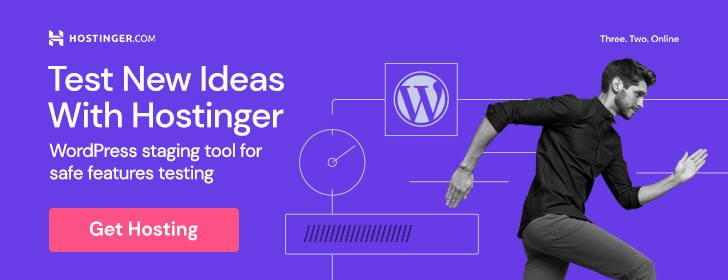Is Your Website Optimized for Better Social Media Integration?
Have you ever wondered if your website is fully optimized to seamlessly integrate with your social media platforms? In this article, we will explore the importance of website optimization for better social media integration and provide you with the tools and strategies you need to enhance your online presence. Let’s dive in!
Understanding the Importance of Website Optimization
Optimizing your website for social media integration is crucial in today’s digital age. It not only enhances user experience but also boosts your brand’s visibility and engagement on various social media platforms. By ensuring that your website is optimized for social media, you can increase traffic, attract new followers, and ultimately drive conversions.
Enhancing User Experience through Social Media Integration
Integrating your website with social media platforms can greatly enhance user experience. By allowing visitors to easily share your content on platforms like Facebook, Twitter, and Instagram, you are making it convenient for them to spread the word about your brand. This can lead to increased brand awareness, as well as create a sense of community around your products or services.
Optimizing Your Website for Social Sharing
One of the most effective ways to optimize your website for social media integration is by adding social sharing buttons to your content. These buttons allow users to quickly share your articles, products, or services with their social media networks at the click of a button. By making it easy for visitors to share your content, you are increasing the likelihood of it reaching a wider audience and driving more traffic to your website.
Tips for Adding Social Sharing Buttons
- Strategically place the buttons: Ensure that your social sharing buttons are prominently displayed on your website, making it easy for visitors to find and use them.
- Choose the right platforms: Select the social media platforms that are most relevant to your target audience and business niche.
- Use eye-catching designs: Make sure your social sharing buttons are visually appealing and align with your brand’s aesthetic.
By implementing these tips, you can optimize your website for social sharing and encourage more visitors to promote your content on their social media channels.
Leveraging Social Media Widgets
In addition to social sharing buttons, you can also leverage social media widgets to further enhance your website’s social media integration. Social media widgets allow you to display your social media feeds, like buttons, and other interactive elements directly on your website, creating a seamless connection between your website and social media platforms.
Benefits of Social Media Widgets
- Increased engagement: By displaying your social media feeds on your website, you can keep visitors engaged and encourage them to follow your accounts.
- Improved brand visibility: Social media widgets make it easy for visitors to like, share, and comment on your content, increasing your brand’s visibility on social media.
- Enhanced user experience: By offering interactive elements like like buttons and comment feeds, you can enhance user experience and encourage visitors to stay longer on your website.
Utilizing social media widgets is a great way to enhance social media integration on your website and create a more interactive and engaging experience for your visitors.
Optimizing Visual Content for Social Media Sharing
Visual content plays a pivotal role in social media engagement. By optimizing your visual content for social media sharing, you can attract more followers, increase likes and shares, and ultimately drive more traffic to your website. Here are some tips for optimizing visual content for social media sharing:
Tips for Optimizing Visual Content
- Use high-quality images: Ensure that your images are of high quality and visually appealing to grab the attention of your audience.
- Optimize image sizes: Resize your images to fit the dimensions of each social media platform to ensure they are displayed properly.
- Add branding elements: Incorporate your brand’s logo, colors, and fonts into your visual content to maintain consistency across all platforms.
By following these tips, you can optimize your visual content for social media sharing and increase engagement with your target audience.
Mobile Optimization for Social Media Integration
With the increasing use of mobile devices, it is essential to optimize your website for mobile users to enhance social media integration. Mobile optimization ensures that your website is responsive and user-friendly on all devices, allowing visitors to easily share your content on their social media platforms.
Importance of Mobile Optimization
- Improved user experience: Mobile optimization ensures that your website is easy to navigate and interact with on mobile devices, enhancing user experience.
- Increased visibility: With more users accessing social media on their mobile devices, mobile optimization can increase the visibility of your content on social media platforms.
- Higher engagement: By providing a seamless mobile experience, you can encourage visitors to share your content on their social media channels, leading to higher engagement levels.
By optimizing your website for mobile users, you can improve social media integration and effectively reach a wider audience on various devices.
Implementing Social Media Meta Tags
Social media meta tags are snippets of HTML code that provide information about your website to social media platforms when your content is shared. By implementing social media meta tags on your website, you can control how your content appears on platforms like Facebook, Twitter, and LinkedIn, ensuring that it is displayed accurately and attractively.
Types of Social Media Meta Tags
- Title tag: Specifies the title of your content, which will be displayed as the headline when shared on social media platforms.
- Description tag: Provides a brief description of your content, enticing users to click through and visit your website.
- Image tag: Specifies the image that will be displayed alongside your content when shared on social media, increasing visual appeal.
By utilizing social media meta tags, you can optimize how your content is presented on social media platforms and encourage more users to engage with your website.
Monitoring and Analyzing Social Media Integration
Once you have optimized your website for social media integration, it is important to monitor and analyze the results to determine the effectiveness of your strategies. By tracking key metrics and analyzing user engagement, you can gain valuable insights into how your audience interacts with your content on social media platforms.
Key Metrics to Monitor
- Click-through rate: Measure the percentage of users who clicked on your social media posts and visited your website.
- Engagement rate: Track the number of likes, shares, and comments your content receives on social media platforms.
- Conversion rate: Analyze the percentage of visitors who took a desired action on your website, such as making a purchase or signing up for a newsletter.
By monitoring these key metrics, you can evaluate the success of your social media integration efforts and make necessary adjustments to improve performance and drive more conversions.
Conclusion
Optimizing your website for better social media integration is essential for enhancing user experience, increasing engagement, and driving conversions. By understanding the importance of website optimization, leveraging social media widgets, optimizing visual content, implementing mobile optimization, utilizing social media meta tags, and monitoring key metrics, you can create a seamless connection between your website and social media platforms. Start optimizing your website today and watch your online presence flourish!











